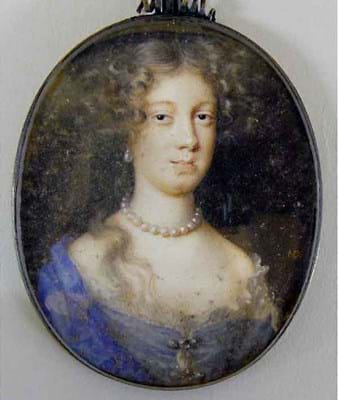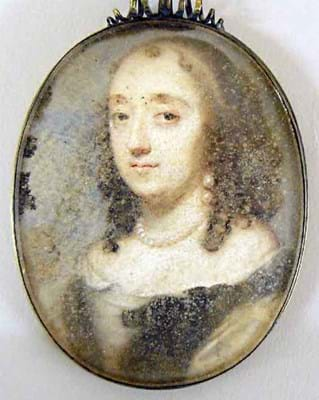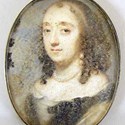The cataloguing may have been a little perfunctory, and the estimates wide of the mark, but these new discoveries, that had come to market from a private house within five miles of the saleroom, stimulated plenty of interest and, ultimately, strong prices.
Samuel Pepys makes many references to Samuel Cooper (1609-72) in his diaries. He tells us the miniaturist was an excellent musician, playing well upon the lute, a good linguist with excellent French, a short, stout man of ruddy countenance and that he charged £30 to paint a portrait of his wife in 1668.
Although initially catalogued only as 17th century English School, when removed from its original brass frame a bust-length portrait of a lady was seen to be signed with the initials SC and dated 1653. With a long waiting list at Cromwell's 'court', Cooper was just as brilliant working for the Commonwealth as he was for the restored king.
The subject, painted in the year of the so-called Barebones Parliament, wears a pearl necklace and earrings and a brown dress with silk undergarment, her curling dark brown hair falling to the shoulders.
It had a little surface damage but, out of the frame appeared in much better condition. Initially pitched at £1000-1500, a figure improved to £6000-8000 upon the eleventh hour discovery of the signature, she ultimately fetched £32,000 - a mid-range price for the finest miniaturist of the 17th century.
Cooper's Successor
The artist who succeeded Cooper as Charles II's 'limner in ordinary' in 1673 was Nicholas (Nathaniel) Dixon (c.1645-1708). Although he lacked Cooper's international reputation, it gives an idea of Dixon's talent and ambition that he received the same payment and benefits as his predecessor. And, as a result of the wholesale dispersal of Dixon's stock to John Holles, Duke of Newcastle for £430 (around £35,000 today), some 30 miniatures by the artist remain in the collection at Welbeck Abbey.
The miniature seen at Strides, initialled ND to the reverse, depicted a lady of the Restoration court in her pearls, this time wearing a striking ultramarine gown with a pale blue and lace underslip.
She was deemed the more attractive of the two subjects and there were some similarities between the sitter and the many surviving portraits of the king's mistress, Louise de Kerauaille, Duchess of Portsmouth and Aubigny (1673-1734).
Prices for Dixon do not, typically, rival those of Cooper (prices have previously peaked at £20,000 for the portrait of Sir George Wakeman sold at Christie's in 2004 and more typically hover below £5000), but this was such a good example that bidding reached £28,000.
Both miniatures were purchased by a bidder in the room on behalf of a London art dealer specialising in portraits.
The buyer's premium was 15%.








